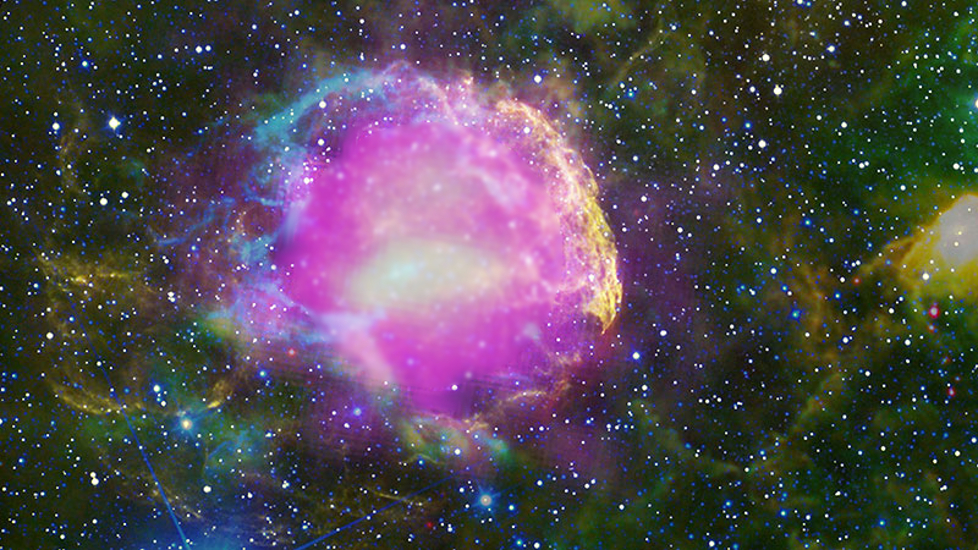
 Credit: NASA/DOE/Fermi LAT Collaboration, NOAO/AURA/NSF, JPL-Caltech/UCLA
Credit: NASA/DOE/Fermi LAT Collaboration, NOAO/AURA/NSF, JPL-Caltech/UCLA
Accelerating Jellyfish
Cosmic rays are high-energy, broken pieces of atoms which stream through the Universe at nearly the speed of light. Though discovered more than 100 years ago, the origins of these high-energy particles are still largely a mystery. Enormous explosions must be involved to accelerate these particles to such high speeds. Some of these explosions are associated with strong flares from the Sun. Other powerful explosions, involving the complete destruction of a star, are also known particle accelerators. However, it was a puzzle whether such supernova explosions could really accelerate atomic nuclei, or whether the accelerated particles were much lighter electrons. Using over four years of high-energy gamma-ray data obtained by the Fermi Gamma-ray Space Telescope, astronomers may have finally solved this particular riddle. The Fermi observations of gamma-ray emission from the supernova remnants known as W44 and IC 443 ("the Jellyfish") show a clear, tell-tale sign of collisions between cosmic ray protons and ordinary atoms. The image above shows the Fermi Gamma-ray image of the Jellyfish nebulae (in magenta), along with observations in the optical (in yellow) in the infrared (from the Wide-field Infrared Survey Explore). The gamma-ray emission detected by Fermi is clear proof that supernovae are efficient accelerators of cosmic ray protons.
Published: February 25, 2013
<
HEA Dictionary ● Archive
● Search HEAPOW
● Other Languages
● HEAPOW on Facebook
● Download all Images
● Education ● HEAD
>

Each week the HEASARC
brings you new, exciting and beautiful images from X-ray and Gamma ray
astronomy. Check back each week and be sure to check out the HEAPOW archive!
Page Author: Dr. Michael F. Corcoran
Last modified Monday, 26-Feb-2024 17:45:41 EST


